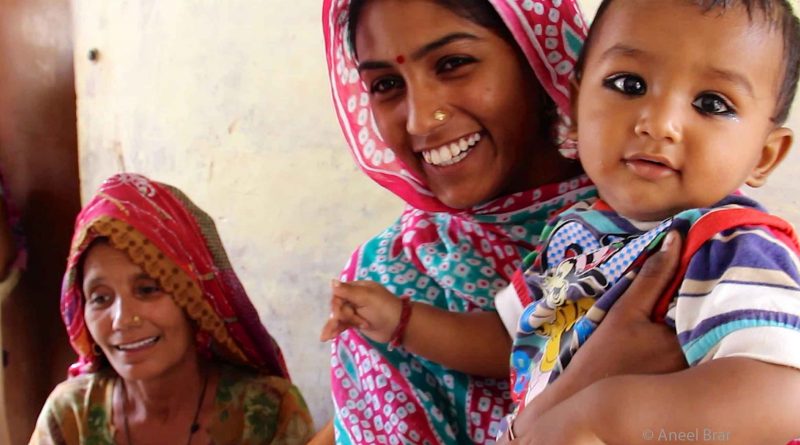Opportunities and Challenges
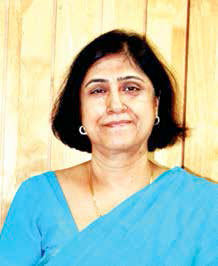

Analysis of the hospital workforce and attendances at the various functional AIIMS reveal that the newly opened ones still struggle from the lack the adequate manpower, and the patients still prefer to travel long distances to get treated at AIIMS in Delhi, instead of the newly opened institutions…
By Dr Suneela Garg/Dr Ruchir Rustagi
India is a land of great opportunities for development, but at the same time poses a challenge due to its geographic and demographic disparity. Of the available world surface area, India shares just 2.4% of the total. With this meagre share of the total surface area, India supports and sustains 16.9% of the world population; being the second most populous country in the world just after China. With the current growth rates, it is projected that India will be the most populous country in the world by 2050.
These current statistics give us an insight in to the magnitude of health care beneficiaries at any time, and at the same time the dearth of resources due to the tremendous load bearing by the limited infrastructure and comparatively scarce resources. This burden is further exaggerated by the fact, that still more than 70% of the population resides in rural areas, with limited resources, manpower and accessibility.The government has been striving and struggling to improve and upgrade the health care infrastructure, and at the same time, generate trained and adequate manpower at all levels.
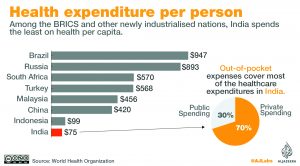 Keeping the same in mind, the government announced Pradhan Mantri Swasthya Suraksha Yojana (PMSSY) in 2003, with the objectives of correcting the regional imbalances in the availability of affordable and reliable tertiary health care services to all, and at the same time, to augment the facilities for provision of quality medical education in the country. The same was proposed to be achieved through upgradation of the existing Government Medical College Institutions, and setting up of more AIIMS like institutions all over the country. Currently, 6AIIMS have been set up overall, with all major facilities, being provided via the Specialty and super-specialty departments. Also, for many more similar institutions, either the development work is in progress, or the foundation stones have been laid and work is to begin soon. But the major challenges in setting up these AIIMS like institutions, is to maintain a similar level of quality of service, which is possible only through development of matching infrastructure, supported by a properly trained and motivated human resource. Analysis of the hospital workforce and attendances at the various functional AIIMS reveal that the newly opened ones still struggle from the lack the adequate manpower, and the patients still prefer to travel long distances to get treated at AIIMS in Delhi, instead of the newly opened institutions. The phased upgradation of many government medical colleges is also undergoing under the aegis of PMSSY.
Keeping the same in mind, the government announced Pradhan Mantri Swasthya Suraksha Yojana (PMSSY) in 2003, with the objectives of correcting the regional imbalances in the availability of affordable and reliable tertiary health care services to all, and at the same time, to augment the facilities for provision of quality medical education in the country. The same was proposed to be achieved through upgradation of the existing Government Medical College Institutions, and setting up of more AIIMS like institutions all over the country. Currently, 6AIIMS have been set up overall, with all major facilities, being provided via the Specialty and super-specialty departments. Also, for many more similar institutions, either the development work is in progress, or the foundation stones have been laid and work is to begin soon. But the major challenges in setting up these AIIMS like institutions, is to maintain a similar level of quality of service, which is possible only through development of matching infrastructure, supported by a properly trained and motivated human resource. Analysis of the hospital workforce and attendances at the various functional AIIMS reveal that the newly opened ones still struggle from the lack the adequate manpower, and the patients still prefer to travel long distances to get treated at AIIMS in Delhi, instead of the newly opened institutions. The phased upgradation of many government medical colleges is also undergoing under the aegis of PMSSY.
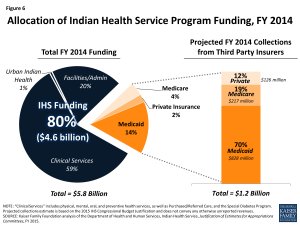 The above scheme focused mainly on development of tertiary care, where, on the other side, majority of population in India resides in rural area, and thus, depends mainly on primary and secondary level of health care. With a motive to target this side of health care, the government revamped the National Health Policy in 2017, after a gap of 15 years. The overall goal was stated to achieve the highest possible level of good health and well-being for all citizens through a preventive and promotive health care orientation in all the developmental policies in the country. By means of these initiatives, the aim is to achieve universal access to good quality health care services, without any citizen having to face any financial hardship as a consequence. The same is to be in line with achieving the Sustainable Development Goal 3 (adopted in 2015), which is to ensure healthy lives and promote well-being for all at all ages. Keeping the goal of National Health Policy as baseline, the union government announced an ambitious health assurance programme – ‘Ayushman Bharat’ for a new India – 2022. Under this programme, two major initiatives in health sector were announced, which were aimed to address health holistically, at all levels of health systems, and covering both prevention and health promotion. The initiatives are as follows:
The above scheme focused mainly on development of tertiary care, where, on the other side, majority of population in India resides in rural area, and thus, depends mainly on primary and secondary level of health care. With a motive to target this side of health care, the government revamped the National Health Policy in 2017, after a gap of 15 years. The overall goal was stated to achieve the highest possible level of good health and well-being for all citizens through a preventive and promotive health care orientation in all the developmental policies in the country. By means of these initiatives, the aim is to achieve universal access to good quality health care services, without any citizen having to face any financial hardship as a consequence. The same is to be in line with achieving the Sustainable Development Goal 3 (adopted in 2015), which is to ensure healthy lives and promote well-being for all at all ages. Keeping the goal of National Health Policy as baseline, the union government announced an ambitious health assurance programme – ‘Ayushman Bharat’ for a new India – 2022. Under this programme, two major initiatives in health sector were announced, which were aimed to address health holistically, at all levels of health systems, and covering both prevention and health promotion. The initiatives are as follows:
Health and Wellness Center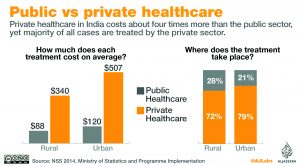 s (HWCs)
s (HWCs)
The Health and Wellness Centers have been envisioned to be the foundation of our health system, with 1.5 lakh centers bringing health care closer to people’s homes by 2022. The centers are required to provide comprehensive health care, including care for communicable diseases, non-communicable diseases, and maternal and child health services. Free of cost essential drugs and diagnostic services also, are to be provided through these centers. The Health and Wellness centers are to be set up through upgradation of the existing sub-centers or primary health centers and opening up of new centers. The first center in these series of HWCs has been inaugurated on 14th April, 2018 in the aspirational district of Bijapur in Chhattisgarh. Approvals for many more HWCs have been processed, and the upgradation work is underway. But, the major challenge that remains in the way of successful functioning of the HWCs is recruitment and placement of adequate and properly trained manpower.
National Health Protection Scheme
The World Bank data shows that 1 in 5 Indians are poor, with 80% of India’s poor living in the rural areas. On the other side, only 15% of Indian population is covered by health insurance, and out-of-pocket payments account for approximately two-thirds of the total health expenditure. This out-of-pocket healthcare expenditure, when catastrophic, further aggravates the level of poverty at all levels. Hence, the National Health Protection Scheme (NHPS) was the second flagship initiative launched under the Ayushman Bharat Programme, which aimed to provide insurance cover to 40% of India’s population. It aims to cover over 10 crore poor and vulnerable families (approximately 50 crore beneficiaries), with a coverage of up to 5 lakh rupees per family per year, for secondary and tertiary care hospitalizations. Recently, 20 states have signed MoU with the central government for their commitment towards implementing the now, National Health Protection Mission (NHPM), and the number is likely to increase to 25 states by the end of June, 2018.
The Ayushman Bharat Programme is envisioned to build a New Healthy India by 2022, which will further ensure enhanced productivity, well-being, aversion of wage losses and impoverishment. But, the limited amount of current healthcare spending is a major challenge in the way of realization of this dream of a healthy and productive India. The current GDP health spending by government of India at 1.15%, is far from even the recommended WHO goal of 5% GDP spending. Although the government has focused on this essential economic aspect and set a goal of increasing the health expenditure by government to 2.5% of GDP by 2025. But, the current annual increase in healthcare expenditure budgetary allocation, is far from achieving this goal, and needs to be at a more accelerated pace, that it is currently. This Ayushman Bharat Programme, if realized and implemented as per the said plan, will be a historic leap in creating a strong primary healthcare foundation reaching the very doorsteps of families/communities, and thus, overall establishment of a robust health system in the country.
(The authors are from Department of Community Medicine, Maulana Azad Medicine, New Delhi)

